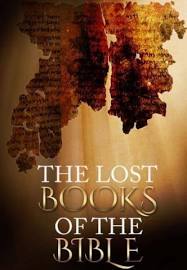Gnosticism and the “Lost Books of the Bible”

Gnosticism, from the Greek word gnostikos (having knowledge), is a modern term used for a variety of ancient religious ideas and systems dating back to the first and second century AD. These beliefs share the idea that the material world is evil and thus could not have been created directly from God. Therefore, there were a serious of emanations from the highest God, which trapped the “Divine Spark” within the human body. Many emanations from the highest God was the God who created the universe. This Divine Spark could be liberated by gnosis.
Gnosis refers to knowledge based on personal experience or perception. In a religious context, gnosis is mystical or esoteric knowledge based on direct participation with the divine. In most Gnostic systems, the sufficient cause of salvation is this “knowledge of” (“acquaintance with”) the divine. It is an inward “knowing,” comparable to that encouraged by Plotinus (neoplatonism), and differs from Christian proto-orthodox views.[1] Gnostics are “those who are oriented toward knowledge and understanding — or perception and learning — as a particular modality for living.”[2][1]
Gnosticism has two main tenants. The first is its believe that matter is inherently evil whereas spirit is good. Some believe that Jesus only had the appearance of a physical body because he could not have been good and physical in nature. Gnosticism teaches that anything done in the body has no meaning because real life exists in the spirit realm only. The second tenant is their claim to possess an elevated knowledge, or “higher truth”, known only to a chosen few. They claim higher knowledge, based not on the Bible, but from a mystical higher plane of existence. Thus they see themselves as a privileged class, elevated by their higher knowledge.
Their proponents usually defend them by claiming they were hidden or surprised by the early church because their teachings were not what the church wanted (if true why wouldn’t the church want them?)
[1] https://en.wikipedia.org/wiki/Gnosticism
Among the Gnostics are those who hold to a theory that Jesus had a romantic relationship with Mary of Magdalene and that he appointed her as leader of the Christian church. This theory is held despite no evidence to support it. In 1896, the gospel of Mary, was discovered in the Akhmim Codex in Cairo, Egypt. It was not published until 1955. Ten pages are missing including the first six. Written in Greek and Coptic, the gospel of Mary codex is dated to the 3rd (Greek) and 5th (Coptic) centuries A.D.
Who the Mary of the text is, is not made clear. In the New Testament six women are named Mary including Mary, Jesus’ mother; Mary Magdalene, and Mary of Bethany. It is assumed by proponents of this theory that it was written by Mary of Magdalene. According to the theory, “true” Christianity is exemplified by Mary whereas patriarchal Christianity is exemplified by Peter. No such teaching is found in the Bible and this writing dates to the late 2nd century at the earliest. Like the gospel of Thomas, the gospel of Philip, and the gospel of Judas, the gospel of Mary is a Gnostic forgery, using the name of a Biblical character to give validity to its heretical teaching.
These Gnostic gospels contain teachings that are contrary to the Bible and hold different views of Jesus Christ, salvation, and virtually every other major Christian doctrine. Their teachings have no support from the early church fathers and the teachings of the Apostles. They were written by a heretical sect to support their teachings. Their only support comes from those sympathetic to their views.

Leave a comment